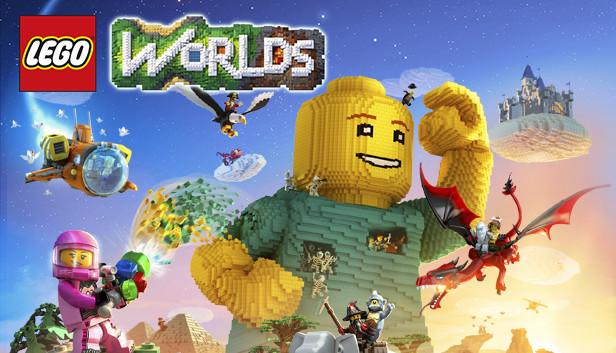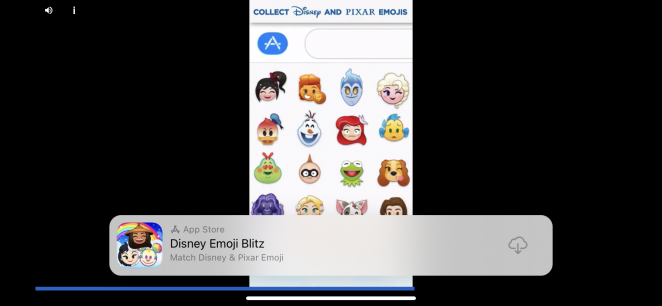Did you know that, whether your next client’s business is relevant to gamers or not, it doesn’t really matter anymore? Surely if you want to create a fully-fledged integrated campaign to target a gaming audience, you should probably ensure that your brand has something to do with them… But if you are looking at in-game advertising, things start becoming rather interesting.
There is a difference between Pringles running a bunch of ads on Twitch (brilliant campaign, by the way) and Hellman's in-game event in the latest Animal Crossing: whereas the former was a traditional campaign, involving a media platform and purchased ad space, the latter was properly embedded within the game. Players were able to drop off turnips on Hellman’s Island, which would directly translate into meals for food rescue organisation Second Harvest. This practice is called in-game advertising – albeit in an advanced form.
What is in-game advertising?
The term is rather self-explanatory: in-game advertising refers to all those instances of advertising that are displayed inside a game, or a virtual gaming environment if you may. These ads may be displayed in the form of short running ads between stages, or as proper events in the likes of Hellman’s – though these are but two of the many kinds of in-game advertising options available out there.
In-game advertising is not necessarily the same as in-game marketing. A case of in-game marketing would be a brand placing its products to be used as part of the game – be it gadgets or customisable skins and cosmetics. Online multiplayer game Fall Guys features these kinds of partnerships quite often, as does Fortnite. However, there are certainly overlaps, especially due to the very interactive nature of games.
The three types of in-game advertising
If you are looking to embrace in-game advertising (IGA) for your next campaign, it will be useful to know the different kinds of IGA, as well as their main strengths and weaknesses.
We can distinguish three different kinds of in-game advertising: static, dynamic and advergames.

Image credit: GamingBolt
Static IGA
Static ads are the oldest form of in-game advertising ever created. They are ads hardcoded into the game, they are part of the game’s structure and they cannot be changed over time.
This kind of static advertising isn’t much dissimilar to product placements in films and TV. One famous example is the Splinter Cell series, where Sam Fisher and his team would use Sony Ericsson phones to catch terrorists. Alternatively, static ads can be placed in games as billboard-like advertisements, a practice that is much more common in sports games (such as FIFA) to simulate real-world environments.
The downside of static in-game ads is that they are not excessively customisable and they rely on the control of developers and publishers to determine their size and position in the game world. Once the game is shipped, there is very little the advertiser can do to change the impact of the ad.
It’s easy to understand why static ads were most popular in the past; games weren’t easy to update with patches and new features, and they would mostly remain the way they were shipped. A Spider-Man game would remain the same from shipment to end of life; and that was it. No exceptions. If the game was crap, it remained crap; for that reason, the true impact of in-game advertising could barely be measured against effective or reliable metrics.
That said, static IGA is still widely used today, although in a much more flexible manner. In-game events or promotions such as Hellmann's are a great example. They increase brand awareness, and once the partnership is over, the publisher and the development team can work on removing that part from the game in the next patch update – like nothing happened.

Image credit: LEGO
Advergames
Whereas static and dynamic ads (which we will examine in a short bit) concern the internal environment of any given game, advergames are video games created specifically for the purpose of advertising a brand, company or product. The most popular series of advergames is certainly in the LEGO family, with numerous video games, from LEGO Star Wars to LEGO Lord of the Rings, released specifically to improve brand awareness and create positive sentiment around LEGO. That said, the LEGO ones are truly excellent games for the most part; most advergames can’t boast that privilege.
Square-Enix’s Marvel Avengers game, for example, was created specifically to strengthen the impact of the Marvel Cinematic Universe and to tap into an audience of affectionate fans. The game was welcomed with a much lukewarm response, with some condemning the mediocre mechanics of the game and a below-average technical side.
Other historical examples include America’s Army, a game developed by the United States Army to recruit teenaged players, and Pepsiman, a runner game similar to Temple Run in which players would save dehydrated people by bringing them cans of Pepsi.
The main downside of advergames resides mostly in their impact on budget. Video games can require millions of dollars to be developed, and the process isn’t as simple as building up a dedicated team for scratch and putting them at work on a bespoke video game for a brand. If you are looking at creating a fully modern game for your brand, one that your audience will love, be prepared to throw a lot of money at the idea. Creating a game on a large scale requires years and years of work, testing, strenuous development and continuous deadlines. You will most certainly have to rely on an external development team to get it done.

Dynamic IGA
I left Dynamic In-Game Ads for last due to the incredibly varied nature of this relatively new form of IGA. There are several kinds of dynamic in-game ads, many of which can often be found in mobile gaming. These ads are the most advanced, customisable and controllable. They can be updated in real-time and tweaked to display the most effective kinds of advertising within a game. They can target specific audiences geographically, they can be aimed at different demographics, and they can even be purchased in the programmatic realm.
The easiest and most identifiable form of dynamic ads are native banners. These in-game ads are just what you would expect: in-game banners that users can click on. They are often displayed through Google Ads, and in the most desirable outcomes, they are part of the game interface itself, perhaps in a bespoke featured space created by the developers or something similar. These ads, like many others on this list, can interrupt the gaming experience, and so should be placed carefully in order to avoid frustration for the player.
The next most popular form of dynamic IGA is interstitial ads. These ads take over the entire screen and often act as a pause between levels. As they are non-skippable, it’s easier for users to remember them and take action once they’ve seen the entire advertisement. However, for the same reason, it is incredibly easy for users to grow annoyed at them. If you are planning to use an interstitial ad as part of your campaign, don’t underestimate the impact it can have on disrupting the experience of a game. Abusing this format can only lead to disaster. Because interstitial ads can host a broad range of rich media content, it is not uncommon to create very small snippets of games for these, with the aim of making the temporary interruption more pleasant or interactive for gamers.
In-game video ads are just as popular. In a similar way to interstitial ads, these ads can be employed in between levels and, when skippable, can usually be skipped after a certain amount of seconds. Alternatively, they can show up as thumbnails to expand – meaning the user must feel compelled to take action and watch the video before they even know what it is about. The thumbnail has to be engaging enough – or offer some kind of reward to the player.

Yes, I have a game where I manage a condo of cats. Your point?
This brings us to rewarded ads. These ads are always offered in exchange for an in-game reward, be it premium currency (which is usually paid for in real money) or any other kind of in-game bonus. The player consciously chooses to watch an ad to get a reward. With that in mind, however, they will usually sit mindlessly through the ad waiting for the game to resume – it is unlikely that they will have any interest in the ad itself. With that said, these ads have the highest view rate of all; if you can make them engaging, they will probably be your best option.
One thing you will probably want to avoid are expandable ads. Once a user taps on them, these ads take over the entire screen – and this often happens by mistake, as the ads themselves are placed near interactive elements in the interface. Users tend to perceive these in-game ads as rather annoying, but again, this often comes down to the advertisement itself. If you can make them engaging, people will want to tap on your thumbnail to expand the ad. That’s what you are primarily aiming for.
Lastly, there are contextual ads – possibly the most useful, positive and interactive kind. Of all the kinds of dynamic ads above, these are the easiest to find outside of mobile games. Just like other contextual ads outside of gaming, these ads work based on location, content preferences, interests and other settings that are related to the user. AR games such as Pokémon GO often employ contextual ads to guide gamers towards points of interest, be it a coffee shop or a physical brand touchpoint.
Dynamic ads can often be encountered in mobile games, as mentioned, but most frequently in free-to-play, freemium and pay-to-play games. MMORPGs (Massive Multiplayer Online Role-Playing Games) used to be much more popular about 10 years ago, but some such as World of Warcraft still survive today – and they are excellent to place contextual ads or premium content. For instance, the Aloft Hotels brand was established in Second Life before its real-world counterpart was completed, and some games such as EverQuest II allowed players to order food delivery from Pizza Hut with an in-game command line.

Photo by Kirill Sharkovski on Unsplash
How does the gaming scene feel about IGA?
As much as in-game ads may be profitable, the gaming industry isn’t too fond of them. Publishers and developers look at them with mixed feelings and sometimes with unease; they can certainly create new revenue streams, but they don’t help with positive sentiment towards a publisher. Integrating in-game advertising without frustrating players is a constant challenge, as gamers aren’t exactly keen on seeing ads during what is supposed to be a fun break time. In the worst cases, some gamers will see IGA as invasive, and if abused, IGA can lead to negative reviews for the game itself.
When done right, however, in-game advertising can truly engage an active audience of gamers, who are already being largely engaged by the kind of experience they see on screen at the time. What matters most is to not underestimate IGA at all; instead, you should treat is as an interactive, powerful ad space with its own strong dignity. And please, do your research on gamers; as quirky as we can be, we know how to be loyal to a brand. If you want to catch a gamer’s attention, he will expect you to know everything about what makes us tick… or roll our eyes with a heartfelt sigh.






